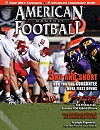Article CategoriesAFM Magazine
|
Get The Most Out Of Your Practice© More from this issue
If you want to enhance the productivity of your football team, where can you find time to do it without making practice longer? Use your imagination to change the pace of practice. Don`t waste time. Practice what you are going to do in a game. Do you run sprints in a game? A fast pace in practice is vital and a fast pace in a game is advantageous, but remain flexible enough to slow down when necessary. My first seven years of coaching I was fortunate to have worked with a legend and learn first hand how to get the most out of every minute of practice. This is a tribute to Weyman Sellers who passed away this January just months after being in....The full article can only be seen by subscribers.
|
|
|||||||
| HOME |
MAGAZINE |
SUBSCRIBE | ONLINE COLUMNISTS | COACHING VIDEOS |
Copyright 2026, AmericanFootballMonthly.com
All Rights Reserved





